
30th March 2006
|
Ilam lies at the lower end of the River Manifold and is one of the prettiest villages in this area of the Peak, with one of the longest histories. The current village was moved in the 1820s by Jesse Watts-Russell from its position near Ilam Hall and rebuilt in its current location in what Watts-Russell considered to be 'Alpine style'. This explains both the unusual style of the buildings and the surprising distance between them and the village church. The centre of the village is dominated by a memorial cross similar to Charing Cross, erected by Jesse Watts-Russell in 1840 to commemorate his wife, Mary. The village was inhabited in Saxon times and the church incorporates some Saxon stonework as well as the tomb of the Saxon saint, Bertram, who lived as a hermit in this area. In 1004 the village was given to Burton on Trent Abbey and a small monastic settlement was established here - after the dissolution of the monasteries this was purchased by the Port family who owned the estate for the next 300 years and established the first Ilam Hall, which was torn down and rebuilt in grand style by Jesse Watts-Russell in the 1820s. |
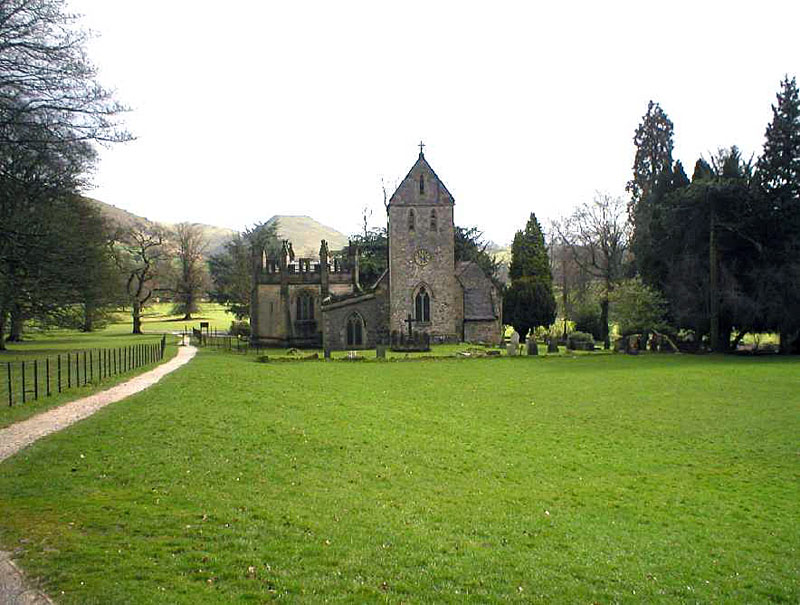 The Ilam Parish Church seen on the left as you approach the Hall entrance |
|
 Ilam Hall itself, used as a Youth hostel |
|
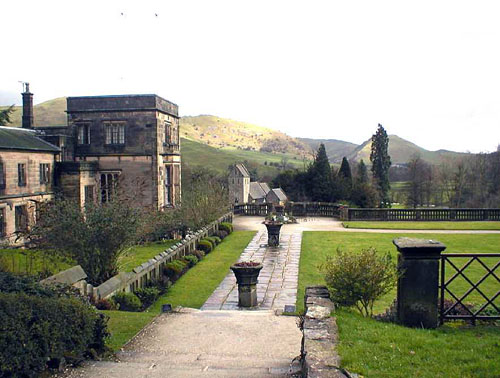 The rear of the Hall |
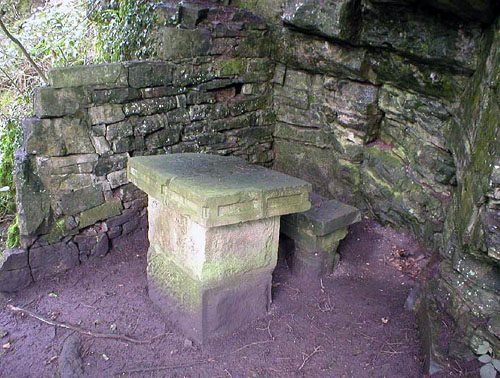 A stone table and seat, situated halfway down to the river |
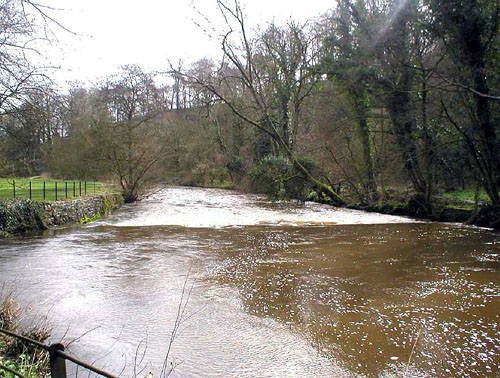 Weir on the River Manifold, just short of the village of Ilam |
|
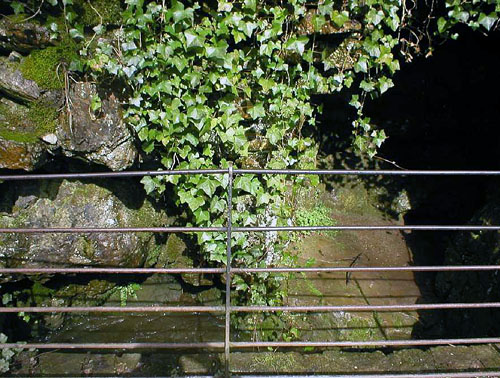 The Boil Hole seen from slightly further back |
|
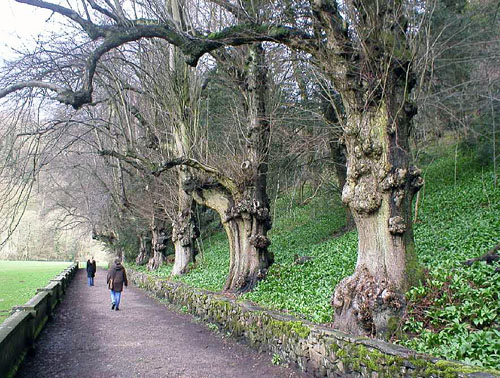 Paradise Walk along the river, the wild garlic can be seen on the ground to the right |
|
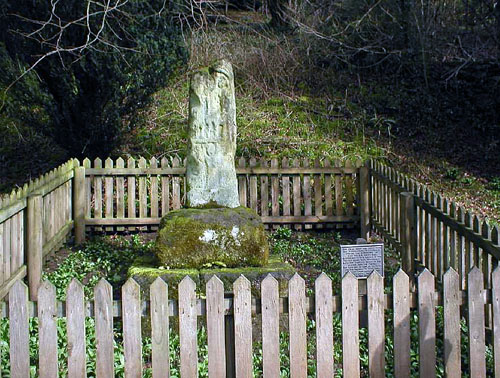 And the relevant stone in question |
 |
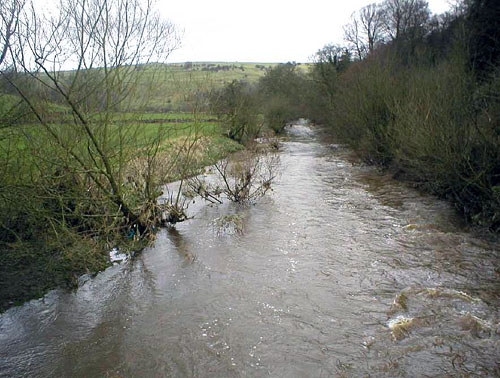 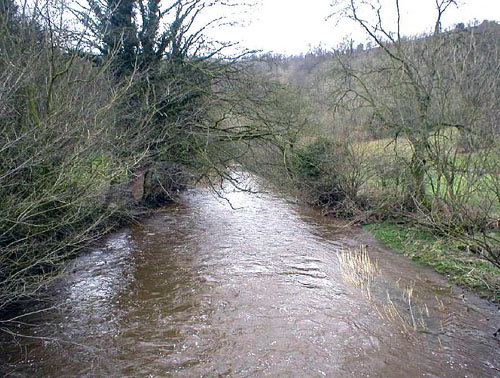 |
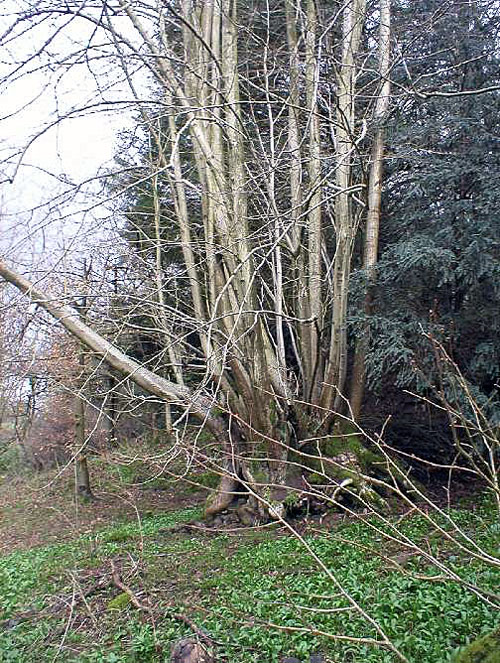 |
 |
|
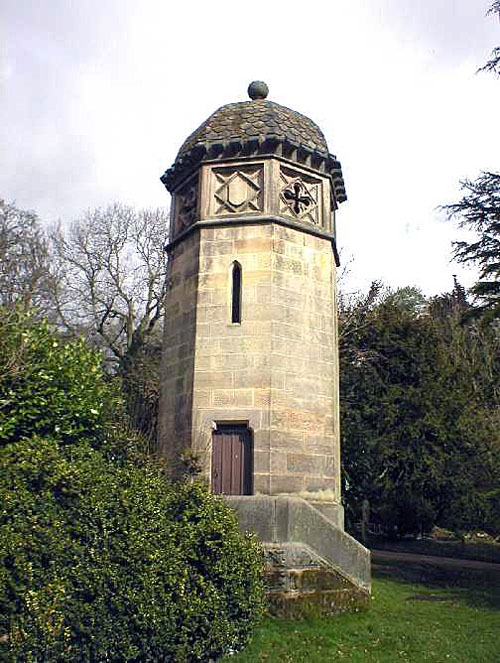 |
|
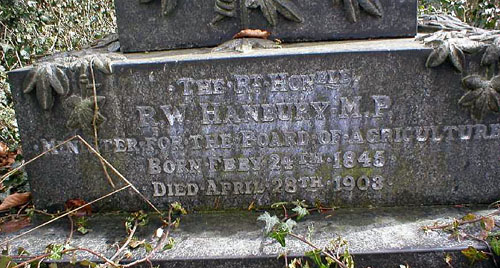 The inscription on the base of the ornate cross |
|
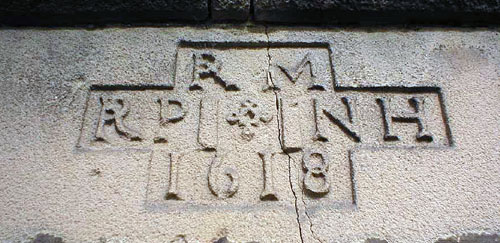 1618 is the date above the doorway, but a Norman, possibly Saxon Church stood here before this one |
|
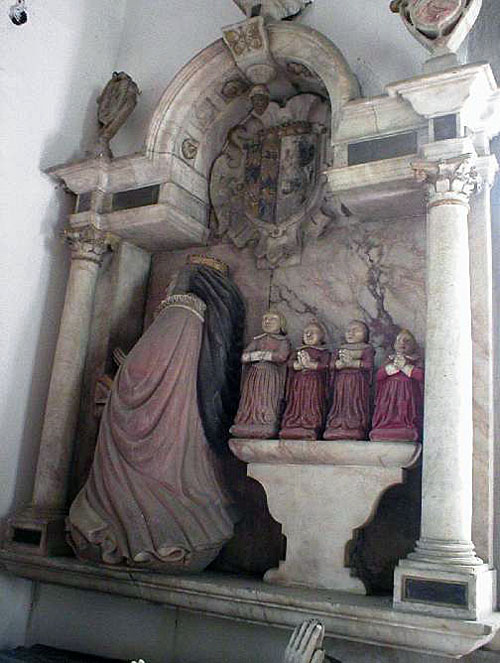 And, above the grave, this depicts the daughter Margaret praying (presumably at the funeral?) |
|
|
The Parish Church, Holy Cross, is a small but beautiful Gothic structure, rebuilt in 1618, and a large portion of the west end is thickly shrouded with ivy. It contains the tomb of St Bertram, who is said to have confirmed the truth of his religious faith by many surprising miracles in this country. An octagonal chapel, lighted with stained glass windows, was added to the church about 20 years ago by JW Russell, Esq, who deposited in it a white marble monument, in memory of his late lady's father, the late David Pike Watts, Esq. From an 1851 book. Alpine-style cottages, a Tudor Gothic Hall, an eccentric river and a wonderful background of soft green hills make Ilam a very popular place with visitors. Many of whom come to walk in Ilam Hallís beautiful parkland, along the aptly named Paradise Walk by the River Manifold. The Manifold disappears for most of its four or five mile route from Wetton Mill, to flow underground before emerging at the Boil Holes, in the grounds of Ilam Hall. Only in the rainy season does it behave like an ordinary river and flow above ground. After the Dissolution of the Monasteries, John Port acquired the estate and built a house on the site of the present Ilam Hall. In 1809, David Pike Watts became the owner and on his death, it passed to his daughter. Her husband, Jesse Watts-Russell a wealthy industrialist, had a rather grand hall built. It had battlemented towers, ornamental chimneys and a flag tower. The architect, who designed the hall, was also engaged in the building of Alton Towers and there were some similarities between the two.The former estate village was mostly demolished and replaced by alpine style cottages, which provided a marked contrast alongside some of the older more traditional buildings. Watts-Russell built the school and provided it with an endowment. It fits in so beautifully with the other alpine style cottages in the village that one cannot imagine any child not wanting to go to school! http://www.derbyshire-peakdistrict.co.uk/ilam.htm |
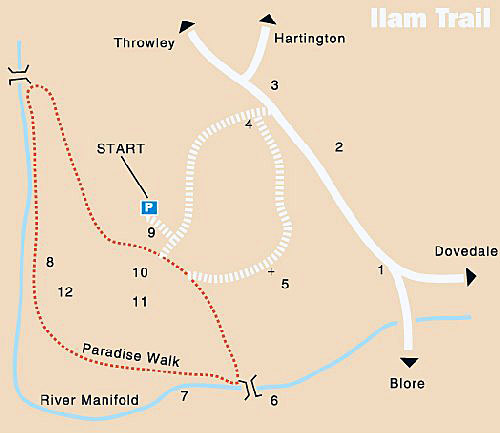
http://www.derbyshire-peakdistrict.co.uk/ilam.htm